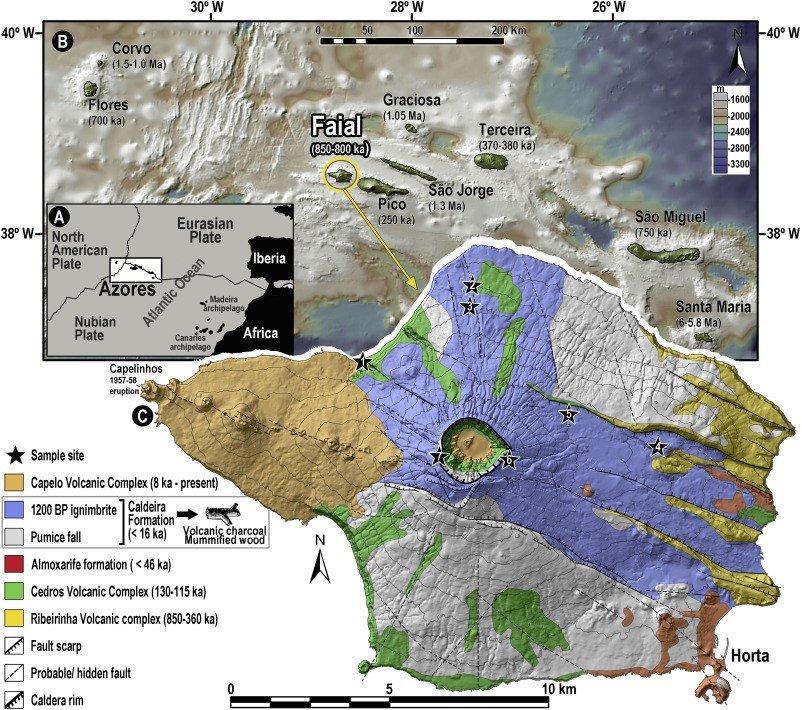New paper by members of IDL on the abundance of Ginjeira brava in Azores
A study on Faial Island corroborated the historical observations of the first chroniclers about the abundance of Ginjeira brava in the Azores. The study, to be published in the February 2020 issue of the 'Review of Palaeobotany and Palynology' Journal, was conducted by the members of the Instituto Dom Luiz (IDL) and of the Departmento de Geologia da Faculdade de Ciências da Universidade de Lisboa, Carlos Góis-Marques and José Madeira, in collaboration with researchers of the Madeira Botanical Group da Faculdade de Ciências da Vida da Universidade da Madeira, da Universidad Politécnica de Madrid e do Grupo de Ecologia e Biogeografia Insular da Universidade de La Laguna. The study of several carbonized trunks collected from volcanic deposits during fieldwork carried out in 2016 has identified a large abundance of Ginjeira brava (Prunus azorica) remains, as well as other groups of trees and shrubs that currently exist in the Azores. These trunks are traces of the forest that covered the island of Faial, which was buried and carbonized by a volcanic eruption that occurred in the middle ages (700-1100 AD). The almost absence of Ginjeira brava currently in the Azores may be related to the destruction of the forest in the first centuries of colonization of the islands.
Access the publication here.




